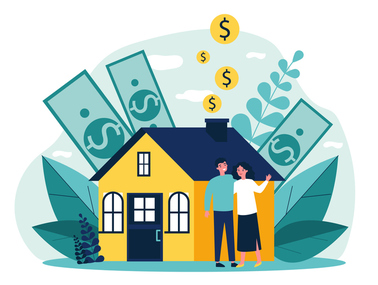Depending on the loan type, you can qualify for a mortgage with a downpayment that is as low as 3% of your home’s final purchase price. And for some loans — such as a VA loan or USDA mortgage — you don’t need any downpayment at all. But what if you can afford a larger downpayment? It might make financial sense to come up with more dollars.
Low downpayment options
You have plenty of options if you want a loan that requires a low downpayment. If your FICO credit score is at least 580, you can qualify for an FHA loan with a downpayment of just 3.5% of your home’s purchase price. And for some conventional loans, you’ll need a downpayment of just 3% of the home’s sale price.
That’s good if you don’t have a lot of extra dollars to devote to a downpayment. A downpayment of 10% for a home costing $350,000 comes out to $35,000. But with a downpayment of 3%, you’d need just $10,500, a substantial difference.
But what if you do have extra money to devote to a downpayment? Sometimes it makes more financial sense to put up a bigger downpayment than required.
Avoid PMI
When does it make sense to come up with more downpayment dollars? If you are taking out a conventional mortgage and you don’t come up with a downpayment of 20% of your home’s purchase price, you’ll need to pay for private mortgage insurance, or PMI.
This type of insurance protects your lender in case you stop making your payments. The price varies depending on the size of your loan and your credit score. But you could end up paying anywhere from about $125 to $350 a month for PMI on a loan of $300,000.
But what happens if you come up with a downpayment of 20%? You won’t need PMI. You’ll have to determine whether the long-term savings of avoiding those monthly payments is worth more than what your scenario is with a smaller downpayment.
Other benefits of a bigger downpayment
Even if you can’t come up with a downpayment of 20%, you’ll still benefit from a larger downpayment if you can afford to make one.
You’re more likely to get a lower interest rate with your mortgage if you provide a larger downpayment. That’s because you’ve already invested more in your home. When you do that, lenders think that you are less likely to stop making your monthly mortgage payments. This makes you a less risky borrower — and one who is worthy of a lower interest rate.
And that lower interest rate is a nice perk. It could save you hundreds of dollars each month throughout the life of your loan.
You’ll also build equity faster with a larger downpayment. Equity is the difference between what you owe on your mortgage and how much your home is worth. If your home is worth $380,000 and you owe $280,000 on your mortgage, you have $100,000 in equity.
You’ll receive an instant equity boost if you put down more money upfront. And having more equity is a positive: You can borrow against your home’s equity in the form of home equity loans or lines of credit and use the money from these products for anything you’d like. You’ll also walk away with more money when you sell your home if you’ve built up more equity.
Does a larger downpayment make sense for you? That depends. You don’t want to spend all your extra money on a downpayment. You’ll also have to pay for your lender’s closing costs, which can run as high as 6% of your loan amount. You’ll want extra money, too, to pay for furnishing your home or any needed repairs. And it’s never a good idea to leave yourself without enough money for an emergency fund.
But if you do have enough money, putting down more when you take out your mortgage could bring financial rewards. Talk with a qualified financial professional who knows your situation and can give you advice tailored to your needs.
Written by Don Amalfitano


 Facebook
Facebook
 X
X
 Pinterest
Pinterest
 Copy Link
Copy Link
